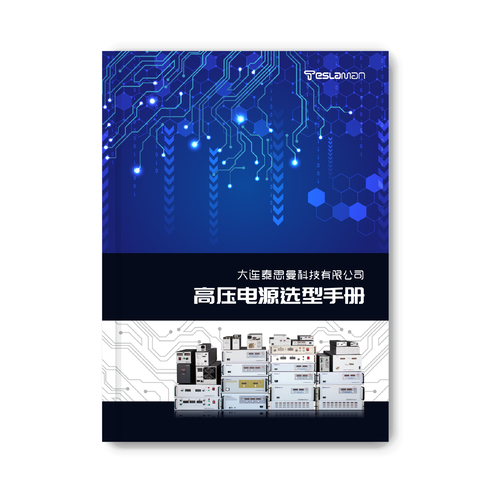Application and Optimization of High-Voltage Power Supplies in Industrial CT
Abstract: This paper delves into the application principles, key technologies, and related optimization strategies of high-voltage power supplies in industrial CT (Computed Tomography) from a professional perspective. By analyzing the working characteristics of high-voltage power supplies, it elaborates on their crucial roles in ensuring the stable operation of radiation sources and enhancing image quality in industrial CT systems. Moreover, in light of the requirements in practical applications, a series of methods and ideas for optimizing the performance of high-voltage power supplies are put forward, aiming to provide strong technical support and theoretical basis for the further development of industrial CT technology.
1. Introduction
Industrial CT, as an advanced non-destructive testing technology, plays a vital role in numerous industrial fields such as aerospace, automobile manufacturing, and mechanical processing. It can conduct high-precision imaging analysis of the internal structure of objects in a non-invasive manner, thereby detecting critical information such as internal defects, dimensional accuracy, and assembly conditions of materials. In an industrial CT system, the high-voltage power supply is one of the core components, and its performance directly affects the emission characteristics of the radiation source and the final imaging quality.
2. Application Principles of High-Voltage Power Supplies in Industrial CT
2.1 Radiation Source Driving
The radiation sources in industrial CT usually need to operate in a high-voltage environment to generate ray beams with sufficient energy and intensity. The high-voltage power supply provides a stable and precisely adjustable high-voltage electric field for the radiation source, accelerating the electrons inside the radiation source to move and strike the target material, thus emitting X-rays or γ-rays. For example, in an X-ray tube, the cathode filament emits electrons when heated, and these electrons fly at high speed towards the anode target under the action of the electric field provided by the high-voltage power supply. When the electrons interact with the target atoms, X-rays are produced. The stability and accuracy of the voltage of the high-voltage power supply have a decisive impact on the energy stability and intensity consistency of the rays emitted by the radiation source.
2.2 Impact on Imaging Quality
High-quality industrial CT images require that the rays emitted by the radiation source have good stability and uniformity. Fluctuations in the performance of the high-voltage power supply will cause changes in the energy and intensity of the rays emitted by the radiation source, which will manifest as non-uniform gray levels and artifacts in the images. For example, when the voltage of the high-voltage power supply fluctuates instantaneously, the energy of the rays emitted by the radiation source will change accordingly, and the attenuation degree when passing through the inspected object will also be inconsistent, ultimately resulting in regions with large brightness differences in the reconstructed image, seriously affecting the accurate judgment of the internal structure of the object. Therefore, a stable and reliable high-voltage power supply is the fundamental guarantee for obtaining clear and accurate industrial CT images.
3. Key Technologies of High-Voltage Power Supplies in Industrial CT Applications
3.1 High-Voltage Generation Technology
The high voltages required for industrial CT usually range from tens of kilovolts to hundreds of kilovolts or even higher. Common high-voltage generation methods include voltage doubler rectifier circuits and high-frequency inverter technologies. The voltage doubler rectifier circuit has a relatively simple structure. Through the combination of multiple diodes and capacitors, it can gradually multiply the lower input voltage to the required high-voltage value. The high-frequency inverter technology first converts the mains electricity into high-frequency alternating current, and then obtains the high-voltage direct current output through transformer boosting, rectification, and filtering. This method has the advantages of small size, high efficiency, and a wide voltage regulation range, and is widely used in modern industrial CT high-voltage power supplies.
3.1.1 Voltage Regulation and Stabilization Technology
To meet the flexible adjustment requirements of ray energy and intensity for different inspected objects and inspection requirements, the high-voltage power supply needs to have precise voltage regulation functions. Usually, a closed-loop feedback control system is adopted. By sampling the output high voltage in real time, comparing it with the set value, and adjusting the output of the high-voltage power supply according to the error signal, stable control of the voltage can be achieved. For example, a high-precision voltage sensor is used to sample the output high voltage, and the sampled signal is input into the comparator in the control circuit to be compared with the preset voltage reference value. The control circuit generates a control signal according to the comparison result to adjust the on-time or frequency of the power switching devices (such as IGBTs) in the high-voltage power supply, thereby achieving precise regulation and stable control of the output voltage.
3.1.2 Insulation and Protection Technology
Since the high-voltage power supply operates in a high-voltage environment, insulation and protection are of crucial importance. On the one hand, high-insulation-performance materials and reasonable structural designs need to be adopted to ensure sufficient insulation distances between the high-voltage electrodes and the ground as well as between different high-voltage components, preventing high-voltage breakdown and leakage phenomena. For example, in the internal layout of the high-voltage power supply, high-voltage components such as high-voltage transformers and voltage doubler rectifier circuits are usually encapsulated in oil tanks or epoxy resin potting bodies with good insulation properties to improve the insulation strength. On the other hand, a complete overvoltage and overcurrent protection circuit needs to be set up. When abnormal situations occur in the high-voltage power supply, the power supply can be cut off in time to protect the equipment and the safety of operators.
4. Optimization Strategies for High-Voltage Power Supplies in Industrial CT
4.1 Improving Voltage Stability
Further optimize the performance of the closed-loop feedback control system by using higher-precision sampling elements and more advanced control algorithms to reduce the voltage fluctuation range. For example, high-performance controllers such as digital signal processors (DSPs) or field programmable gate arrays (FPGAs) can be used to achieve rapid and precise voltage regulation. At the same time, a voltage pre-regulation stage can be added. According to historical operation data and the requirements of the current inspection task, the output voltage of the high-voltage power supply can be coarsely adjusted in advance, and then fine-tuned through the closed-loop feedback control, improving the response speed and accuracy of voltage stabilization.
4.2 Optimizing the Efficiency of High-Voltage Power Supplies
Start from the aspects of circuit design and component selection to reduce the energy loss of the high-voltage power supply. For example, select power switching devices with low on-resistance to reduce switching losses; optimize the design of transformers to improve their conversion efficiency; adopt soft-switching techniques to reduce the voltage and current stresses during the switching process, reducing electromagnetic interference and energy losses. In addition, through intelligent power management strategies, the working mode of the high-voltage power supply can be dynamically adjusted according to the actual load situation. When the load is low, the output power of the high-voltage power supply can be reduced to improve the overall efficiency.
4.3 Enhancing the Reliability of High-Voltage Power Supplies
In terms of hardware design, adopt the concept of redundant design by adding backups for key components, such as standby power modules and redundant control circuits. When the main components fail, they can automatically switch to the backup components to ensure the continuous operation of the high-voltage power supply. In terms of software, perfect the fault diagnosis and self-repair functions to monitor the running state of the high-voltage power supply in real time, discover potential faults in a timely manner, and take corresponding measures to repair or issue alarm prompts. At the same time, strengthen the environmental adaptability design of the high-voltage power supply to improve its reliability and stability in harsh industrial environments such as high temperature, humidity, and electromagnetic interference.
4.4 Miniaturization and Integration Design
With the development of industrial CT equipment towards miniaturization and portability, the high-voltage power supply also needs to be designed for miniaturization and integration. By using new high-voltage components and integrated packaging technologies, multiple functional modules such as high-voltage generation, voltage regulation, and control circuits can be integrated into a compact package, reducing the volume and weight of the high-voltage power supply. For example, by using multilayer printed circuit boards (PCBs) and surface mount components (SMDs), optimizing the circuit layout to improve space utilization; developing miniaturized high-voltage transformers and capacitors and other components to further reduce the overall size of the high-voltage power supply.
5. Conclusion
The high-voltage power supply has an irreplaceable important position in industrial CT technology. Its application principles involve multiple key links such as radiation source driving and imaging quality assurance. Through in-depth research and application of key technologies such as high-voltage generation, voltage regulation and stabilization, and insulation and protection, the stable and reliable operation of the high-voltage power supply in the industrial CT system can be ensured. At the same time, in order to meet the continuously developing needs of industrial CT technology, optimizing the design of the high-voltage power supply from the aspects of improving voltage stability, optimizing efficiency, enhancing reliability, and realizing miniaturization and integration will help promote the application and development of industrial CT technology in a wider range of fields, providing more accurate, efficient technical means for quality control, fault detection, and R&D innovation in industrial production. In the future research and development, new technologies and methods need to be continuously explored to further improve the performance of the high-voltage power supply in industrial CT to meet the growing industrial inspection needs.




















